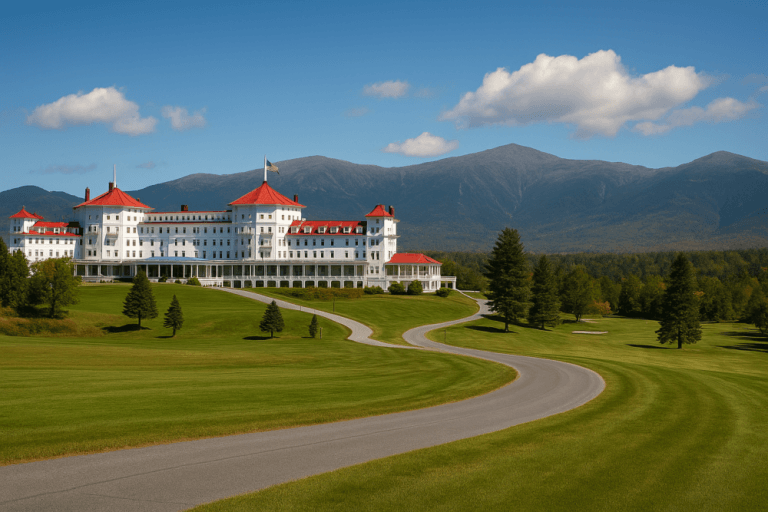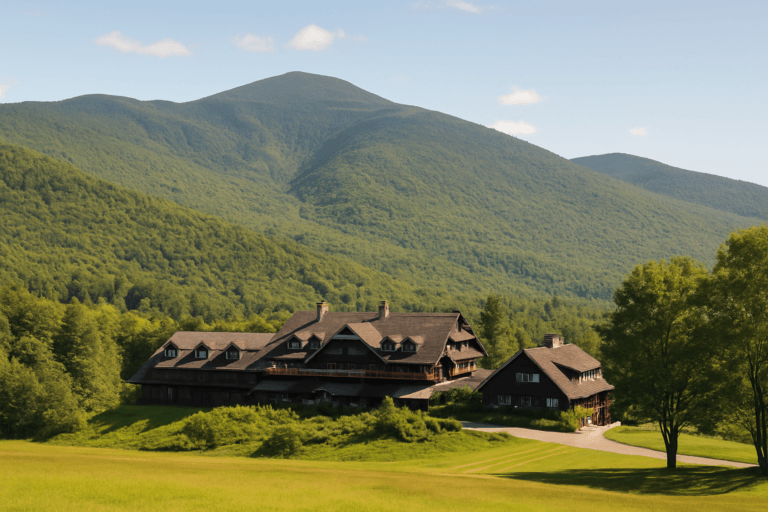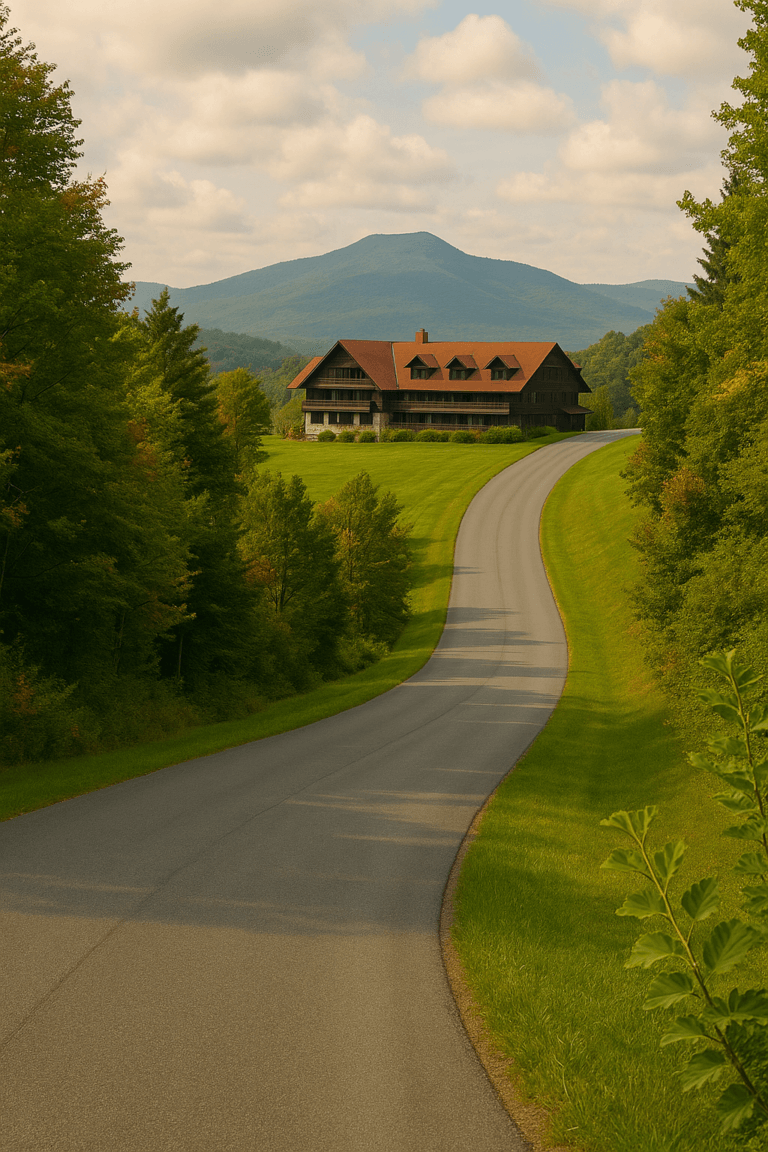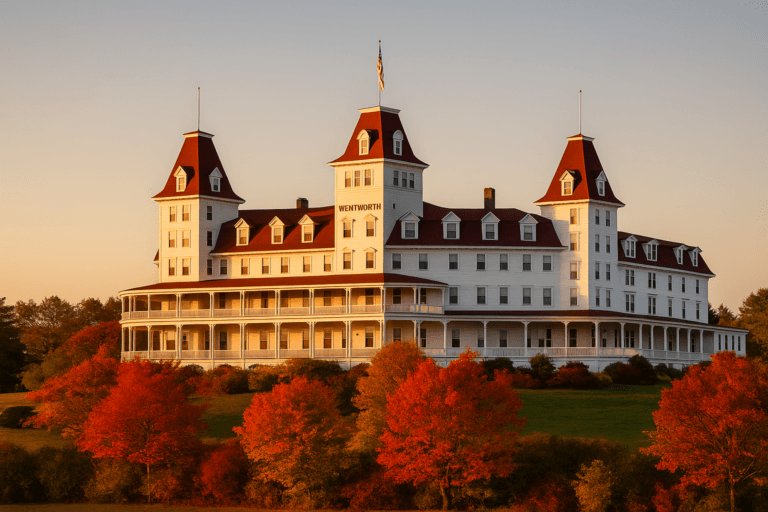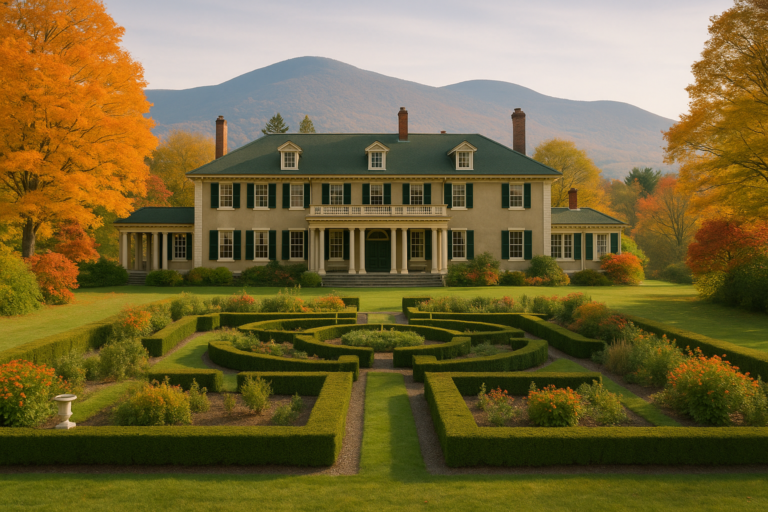Deep Dive: The Story Of Miramont Castle—A Sanctuary In The Shadow Of The Rockies
Nestled into the hillside of Manitou Springs, Colorado, Miramont Castle is the kind of place that sparks questions before you even reach the front door. With its towering turrets, winding hallways, and an architectural style that defies categories, it looks more like a dream—or a mystery—than a traditional Colorado landmark.
Even without setting foot inside, it’s easy to get pulled into the castle’s story. Its history is full of transformation, vision, and just enough oddity to make it unforgettable. This is a place where faith, healing, and eccentricity intersect—and its story is as layered as the mountains that surround it.
 Miramont Castle rises from the hillside like a fortress of faith and history.
Miramont Castle rises from the hillside like a fortress of faith and history.
Built with Purpose: The Origins of Miramont
The castle began with Father Jean Baptiste Francolon, a French-born Catholic priest who arrived in the United States in the 1800s. He eventually made his way to Colorado and, inspired by both his spiritual convictions and artistic sensibilities, oversaw the construction of what would become Miramont Castle in 1895.
Father Francolon envisioned more than a residence—he wanted a sanctuary. Situated in Manitou Springs, known even then for its mineral-rich springs and crisp mountain air, the site was ideal for a retreat. The structure that rose from the hillside was anything but ordinary: a 14,000-square-foot mansion infused with religious symbolism, European influence, and a touch of mystery.
It was a reflection of Francolon’s inner world—part monastery, part estate, and entirely unique in the American West.
 Father Francolon brought European ideals and religious conviction to the American West.
Father Francolon brought European ideals and religious conviction to the American West.
The Castle’s Many Lives
Miramont Castle didn’t remain in Father Francolon’s hands for long. Within a few years, the property was entrusted to the Sisters of Mercy, who transformed the space into a sanitarium. Tuberculosis patients were drawn to Manitou Springs for its restorative climate, and the castle became a place of healing.
Over the decades, the building evolved again and again. It served as a convent, a boarding house, and eventually a museum. Each chapter of its life added layers to its character. Today, visitors can explore rooms that still show the contrast between elegance and utility—spaces where hand-carved fireplaces sit across from former patient quarters, or where a solarium once welcomed both meditation and medical recovery.
It’s the kind of place where you can see history overlapping itself, each era leaving behind traces in wallpaper, woodwork, and whispers.
 In the early 1900s, the castle served as a sanitarium for tuberculosis patients.
In the early 1900s, the castle served as a sanitarium for tuberculosis patients.
Architectural Oddities & Innovations
One of the most intriguing aspects of Miramont Castle is its unconventional architecture. Designed under Father Francolon’s direction, the structure blends nine distinct styles, including Gothic, Romanesque, Moorish, and Victorian influences. It’s an architectural patchwork that somehow works—chaotic on paper, compelling in person.
From accounts and photographs, there are details like:
- A hidden staircase, once used by servants
- A ship’s-hull-style ceiling in one of the upper rooms
- A bright solarium with wraparound windows
- Hand-carved woodwork and imported tiles
It’s not just about beauty—it’s about intent. Father Francolon wasn’t building for fashion or status. He was building for meaning. Every angle and curve seems to reflect something deeper, whether spiritual, functional, or both.
 Nine architectural styles blend together inside the castle’s eclectic rooms.
Nine architectural styles blend together inside the castle’s eclectic rooms.
Legends, Lore, and Ghostly Whispers
With so much history packed into its walls, it’s no wonder Miramont Castle has its share of ghost stories.
Local legends and visitor reports tell of unexplained footsteps, flickering lights, and sudden cold spots in certain rooms. The former servant staircase, in particular, is often mentioned in paranormal circles. There’s even talk of a spirit believed to be Father Francolon himself, watching over the halls he once called home.
Whether or not these tales hold truth, they’ve become part of the castle’s cultural fabric. Like any good mystery, they add another dimension to the place—a sense that Miramont isn’t just preserving history, but still living it in some unseen way.
 Some visitors say the past still lingers in Miramont’s quieter corners.
Some visitors say the past still lingers in Miramont’s quieter corners.
Miramont’s Place in Colorado History
Beyond its eccentric charm and haunted reputation, Miramont Castle offers a window into a specific moment in American—and Colorado—history.
At the turn of the 20th century, Manitou Springs was a sought-after health resort, attracting people suffering from tuberculosis and other ailments. The town’s mineral waters and mountain air were considered therapeutic, and facilities like Miramont Sanitarium played a key role in that movement.
But Miramont also stands at a crossroads of Old World religious tradition and New World experimentation. Father Francolon brought with him not just the rituals of the Catholic Church, but the aesthetic ideals of European architecture. His castle was a personal expression, but it also reflected broader cultural currents—immigration, faith, wellness, and the American frontier spirit.
Reflections: Why Miramont Still Matters
Today, Miramont Castle is open to the public as a museum, offering a glimpse into both the personal story of its creator and the collective history of Manitou Springs. It’s not just the grandeur or the ghost stories that make it memorable—it’s the sense of intention behind every stone, every staircase, every unusual choice.
Even from afar, Miramont invites curiosity. It challenges expectations. It tells the story of a man who dared to build something timeless in a place defined by change. And in doing so, it continues to inspire visitors, historians, and storytellers alike.

